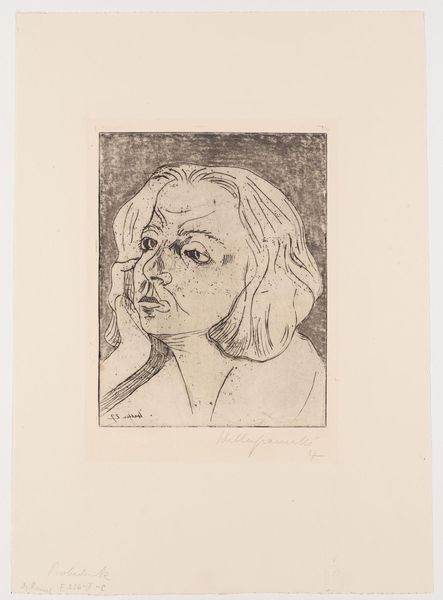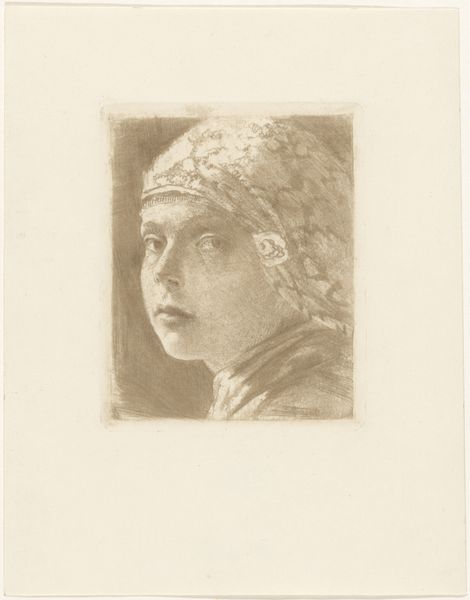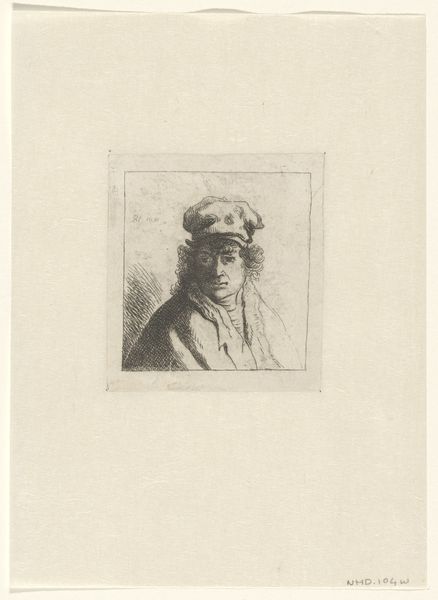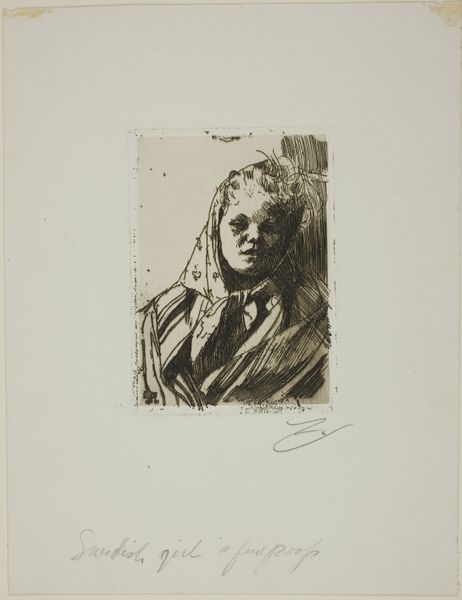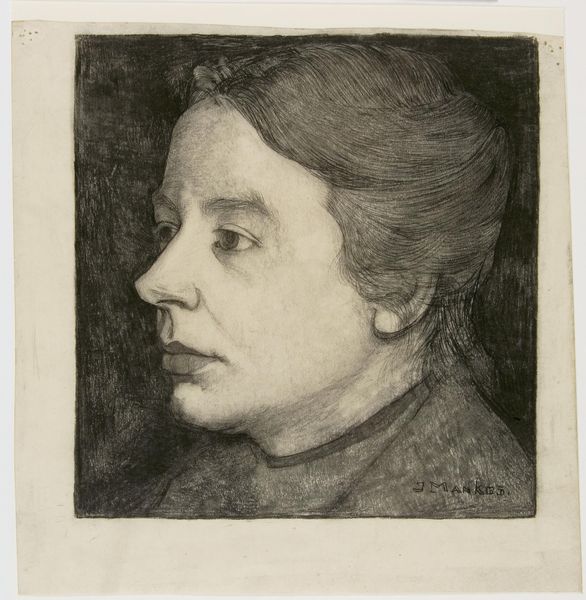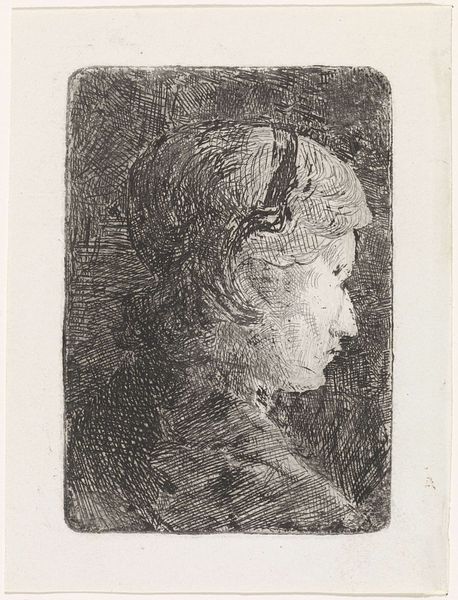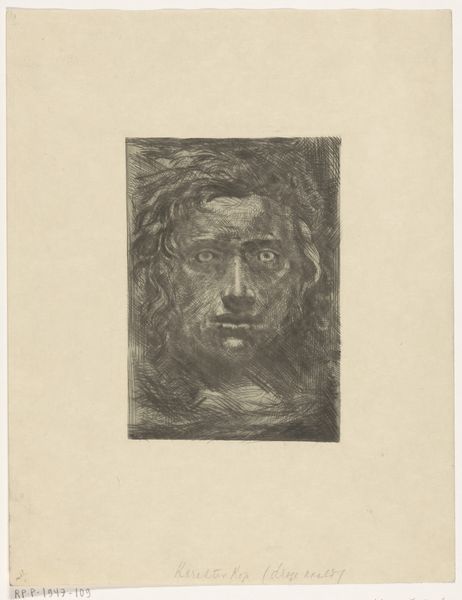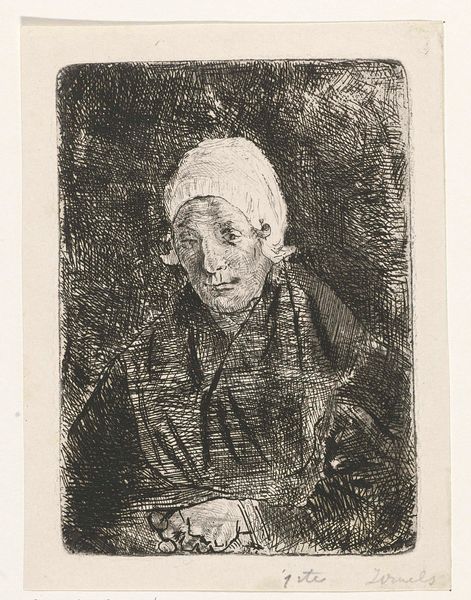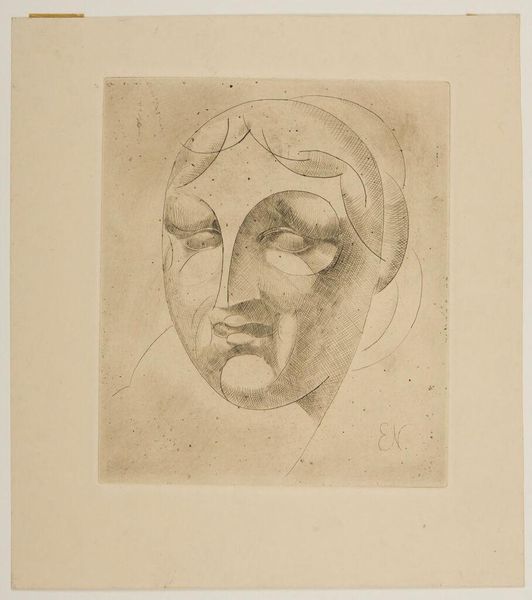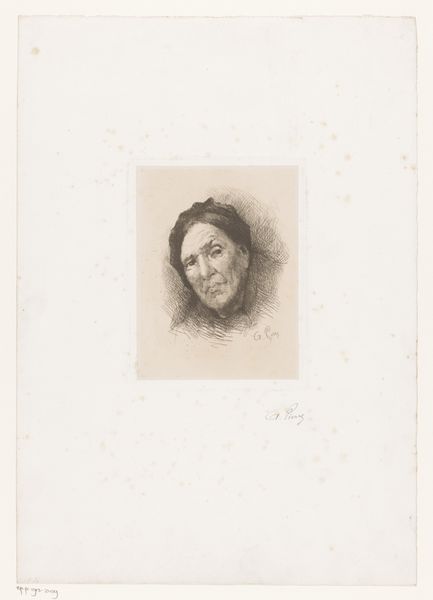
drawing, print, charcoal
#
portrait
#
drawing
#
self-portrait
# print
#
german-expressionism
#
charcoal drawing
#
expressionism
#
portrait drawing
#
charcoal
Dimensions: 5 1/2 x 3 7/8 in. (13.97 x 9.84 cm) (plate)12 3/16 x 8 13/16 in. (30.96 x 22.38 cm) (sheet)
Copyright: No Copyright - United States
Curator: This is "Self-portrait," a charcoal drawing done in 1912 by Käthe Kollwitz, now held in the collection of the Minneapolis Institute of Art. Editor: It's remarkably direct, even severe. The use of charcoal gives it such an immediate, almost tactile presence. Curator: Kollwitz was deeply invested in the means of production; the availability of charcoal for drawings and prints, alongside lithography, afforded her ways to broadly circulate images dealing with social justice. Her skillful mark-making with the material conveys both power and vulnerability. Editor: Absolutely. The deep shadows emphasize the weight of her gaze. Knowing the sociopolitical context of Germany during the early 20th century, with rising social inequalities, and considering Kollwitz’s own experiences as a woman artist and witnessing immense suffering through her husband's medical practice, that severity you noted truly resonates. Curator: Think of the paper too. The type of paper she chooses would need to stand up to repeated reworkings and edits. And consider who produced this paper and how available it might have been— these are all significant questions when grappling with a piece of this era. The final printed object made these images more affordable and allowed them to reach a broader audience, specifically the working class she often represented. Editor: The texture, the raw quality of the lines created by the charcoal… it mirrors the grit and resilience of the people she depicted, and also speaks to the artist's own resolve in the face of hardship. There is also an unflinching gaze, perhaps communicating a degree of introspection that we can view through the lens of a modern perspective. Curator: Looking at the choices made, from the charcoal to the printing process itself, we understand Kollwitz wasn't simply creating art for art's sake. This was about labor, production, distribution, and reaching people. Editor: Yes, exactly, and the emotional honesty of this piece offers an example of how the artist placed herself within a history of marginalized communities, bearing witness and pushing for systemic change through her work. Curator: Thinking about this particular work in relation to the time and the material process definitely changes my understanding of what Kollwitz was trying to communicate. Editor: It reframes how we, too, can choose to witness injustice through historical art that acts as both mirror and guide for contemporary times.
Comments
No comments
Be the first to comment and join the conversation on the ultimate creative platform.
